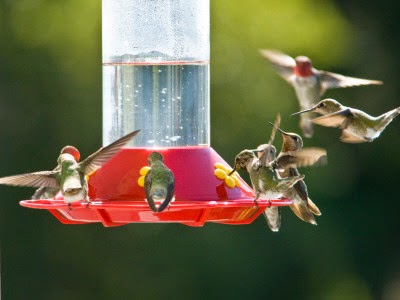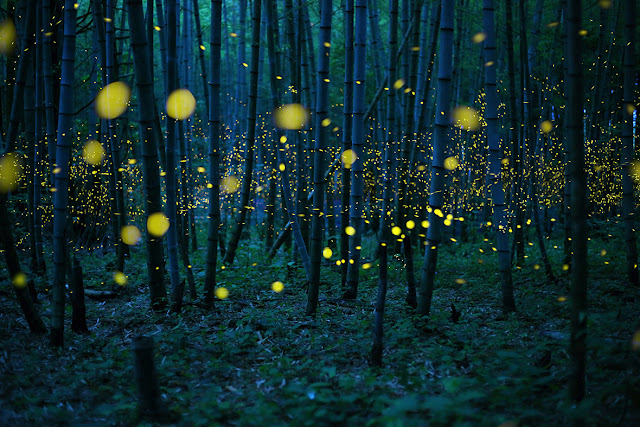Hummingbirds
Every year arrival of Summer is announced by a zinging noise going rapidly by your head and you know the hummingbirds have arrived.
Then I create some sugar water for the new arrivals (a sugar water mixture- 4 parts water to one part sugar cooked together till the sugar melts and then cooled). To keep it fresh this sugar mixture should be replaced every 4 days.
Apparently the little mini-birds will create a route when they arrive of the available flowers and feeders and you need to get on their radar sort-of-speak in order to insure you have them all summer long.
They have to constantly feed & fly in order to keep their high metabolism fed.
According to Starsmore Discovery Center Hummingbird Garden- A Haven For Hummers in Colorado Springs:"As is typical with birds, the males have the most distinctive colors. The body is green and white with tawny wings and a characteristic rose gorget or throat patch, which flashes with an iridescent sparkle when it catches the sun. The female is more muted, mainly green and white without the showy gorget." STARSMORE DISCOVERY CENTER They also say the difference between male and female is the male makes a trilling sound with his wings as he flies, the female is silent.
The Audubon Society describes them: "Few animals are as charismatic as hummingbirds. A heart that can beat 1,260 times per minute and wings that can circle 200 times per second enable this aerialist to hover, spin, duck, and dive."Audubon
For more information on hummingbirds see the Audubon Society article: Hummingbirds See Red. And watch a short podcast on them: Hummingbirds: Magic in the Air.
In Colorado there are four different types of hummingbirds and again according to The Starsmore Discovery Center Hummingbird Garden: "There are over 300 species of hummers, four of which are found in the park. The Broad-tailed hummingbird shows up first, about mid-April. The Black-chinned hummingbird - the rarest of the four in this area - and the Calliope follow, from the end of May to mid-June. Last to arrive is the Rufous, which turns up in early July." Starsmore Discovery Center I think I noticed the Rufous a few weeks ago- it seems larger and a bit more aggressive.
One imposter to hummingbirds here in Colorado is the Sphinx Moth or Hummingbird Moth:
But he has 6 legs, not 2 like the hummingbird and instead of a beak, he has a flexible proboscis which he inserts into the flower. Also this little guy has two antennas. But he flies like a hummingbird, darting from flower to flower.
I saw one when my porch got dark and suddenly this LARGE bug is darting into the flowers right next to me. I moved- in case he was clumsy- but he seemed intent on his dinner. Feather Tailed Stories
To hear a Hummingbird and a description of an Audubon project to protect Hummingbirds and report on your hummingbird activity to help them out! Hummingbirds At Home.
If you want to see more hummingbirds and also help them build and create a Hummingbird garden.
Many of the flowers are perennials- meaning they come up every year and therefore are easier to maintain once they are established.
Hummingbirds love Bee-balm!
Check local nurseries or garden clubs for information on what to plant in your are. Here in Colorado Springs the utility company has a garden center to help you decide what plants are best for your garden. It's bit trickier here because of are semi-arid conditions (at times). Here's one site on what plants to pick and why. Many are red and have fluted flower petals for the little hummingbirds. Attracting Hummingbirds





.jpg)
.jpg)






.jpg)

.jpg)
.jpg)
.jpg)

.jpg)






































